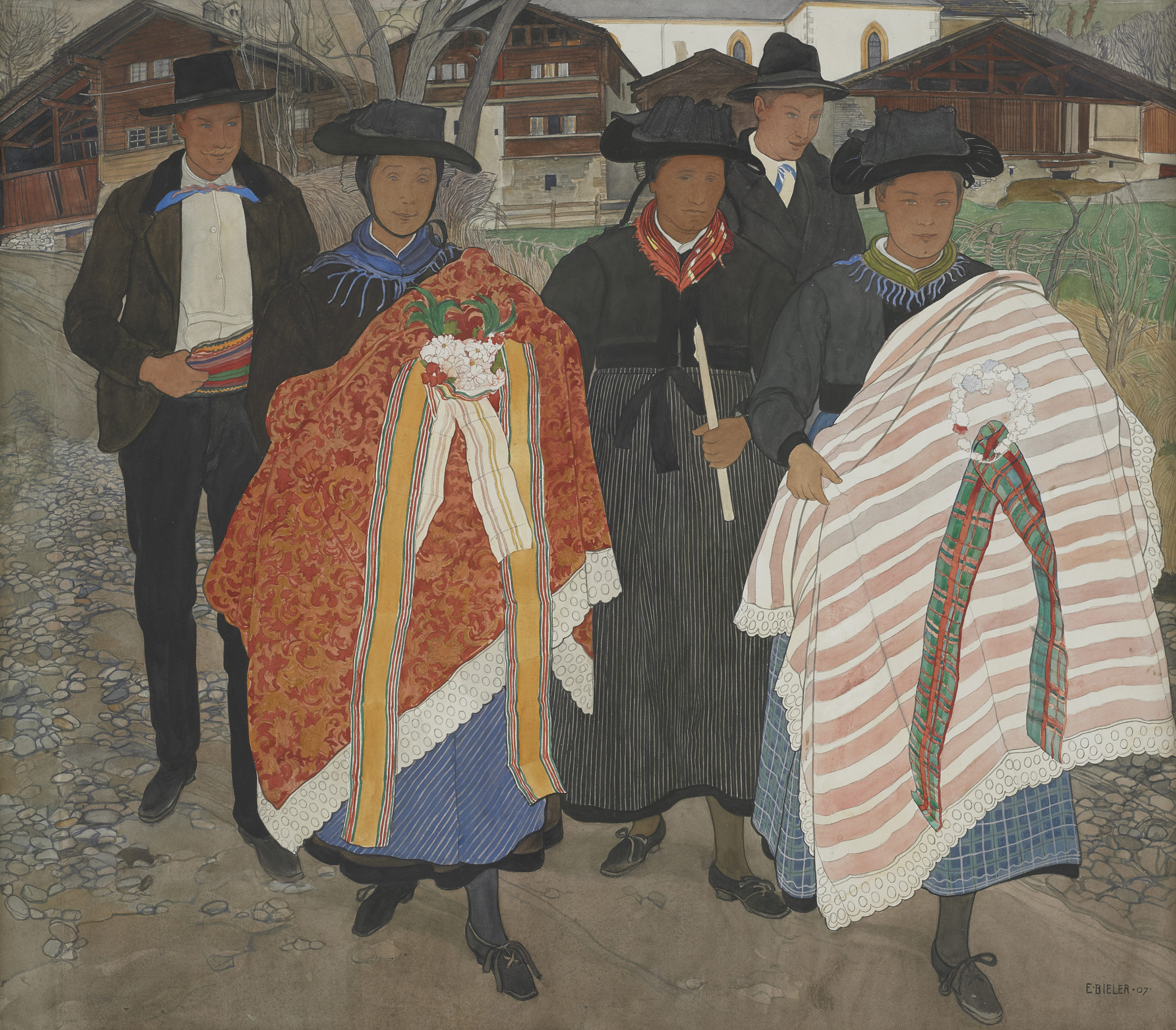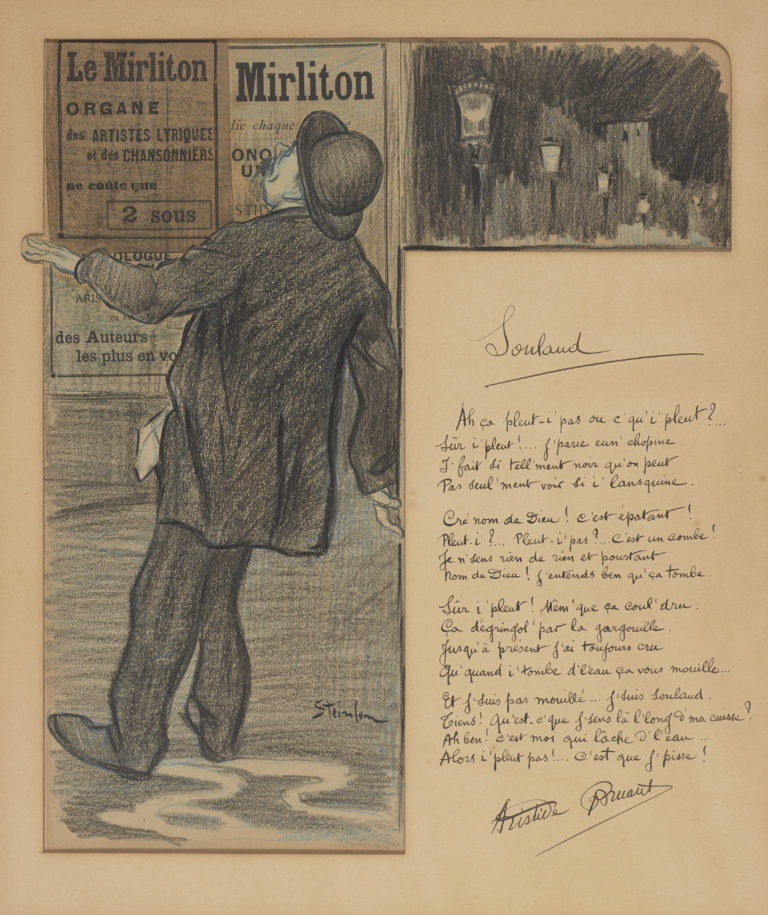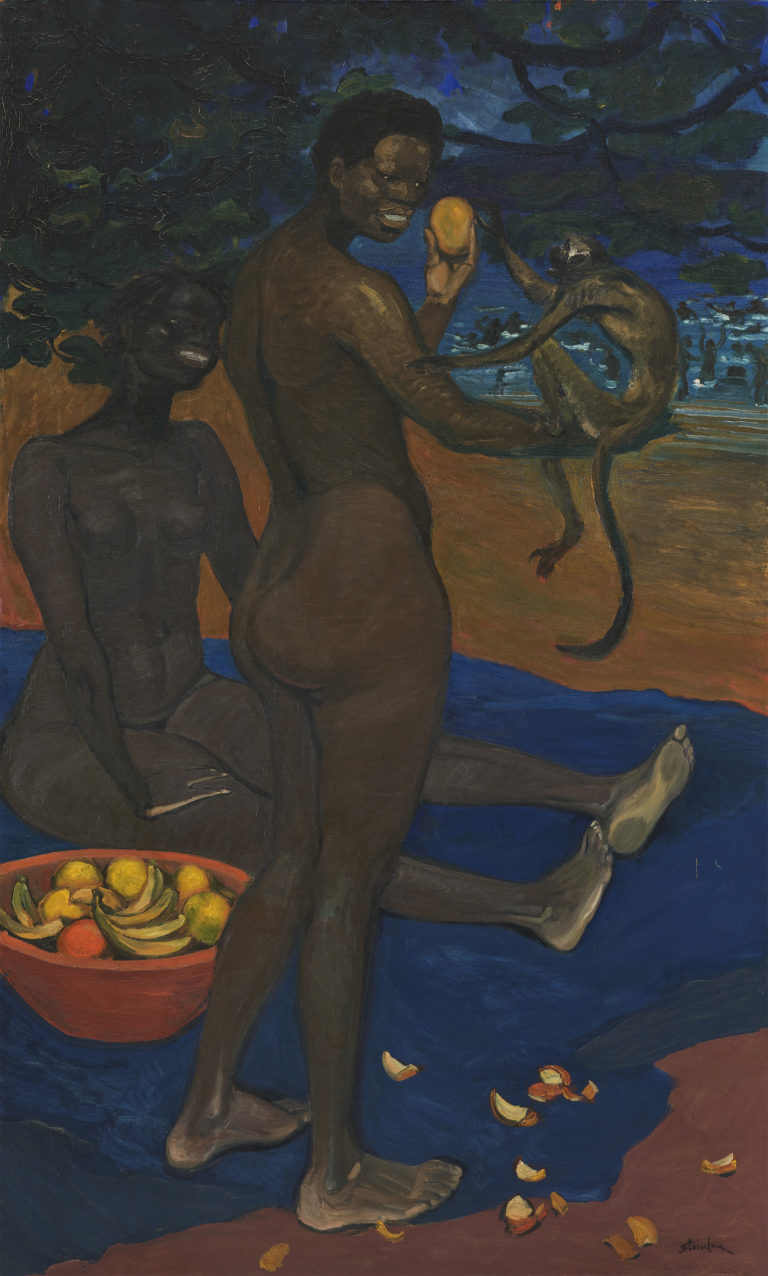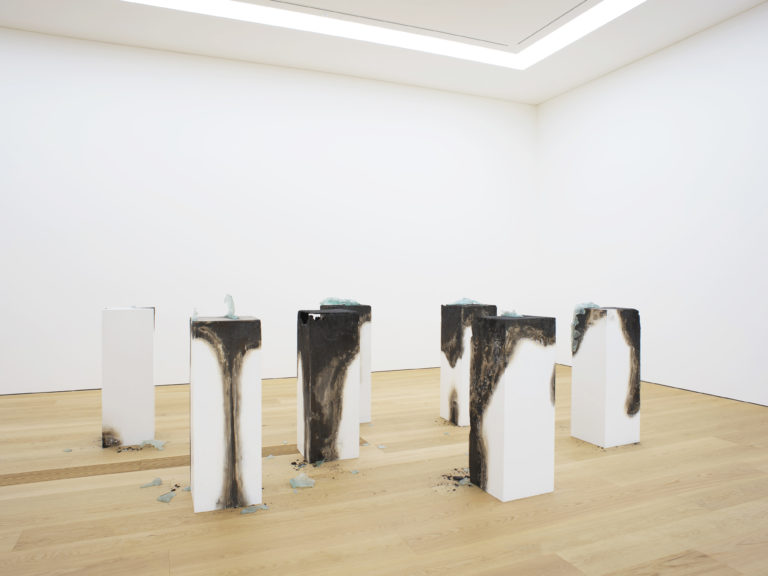Bibliography
Ethel Mathier et Matthias Frehner, Ernest Biéler. Geträumte Wirklichkeit/Réalité rêvée, exh. cat. Berne, Kunstmuseum Bern, Martigny, Fondation Pierre Gianadda, 2011, n° 51.
Anne-Gabrielle Bretz-Héritier et Nicola-V. Bretz (eds.), Le costume de Savièse. Patrimoine vestimentaire de 1860 à nos jours, Savièse, Éditions de la Chervignie, 2011.
Elizabeth Fischer et Catherine Lepdor (eds.), Modes et tableaux. Œuvres de la collection et costumes de 1700 aux années folles, Les Cahiers du Musée des Beaux-Arts de Lausanne n° 10, 2000, n° 7.




European genre painting began to develop a taste for what might be termed “local exoticism” in around 1830, a trend that culminated at the turn of the twentieth century. It drew on increasingly confident expressions of national identity and an interest in local customs and traditional costumes that were in danger of dying out. Artists began to show more interest in the simplicity of rural life than in the mysterious Orient or sun-drenched Italy.
This trend, mirroring the birth and rise of ethnography, took the Vaud-born artist Ernest Biéler to Savièse in the Valais, where he settled in 1900. Beginning in 1905, he worked on a series of portraits of rural folk and village scenes in small and medium size formats. His style involved strong outlines, flat swathes, bright colours, and forms arranged in accordance with the overall decorative effect. The new style, which he called “graphic painting”, led him to drop oils for watercolours and gouache, which lacked thickness and shine and helped him downplay the importance of texture. The Swiss Confederation acquired this work for the museum at an exhibition at the Zurich Künstlerhaus in 1907, where Biéler showed no fewer than thirty-three works.
The scene takes place in Savièse, identifiable from the church in the background. The women are wearing the traditional mandzon, a short long-sleeved jacket, over their Sunday gowns and aprons. The men wear long belts woven from wool, rolled bandanas as ties, and linen shirt fronts. The freshly baptised babies are swaddled in multicoloured silk baptismal blankets trimmed with lace and decorated with a ribbon and floral wreaths. The burst of colours and textures and the age-old religious tradition were bound to catch Biéler’s painterly eye: he was, as one contemporary critic put it, the champion of “one country and one race”.